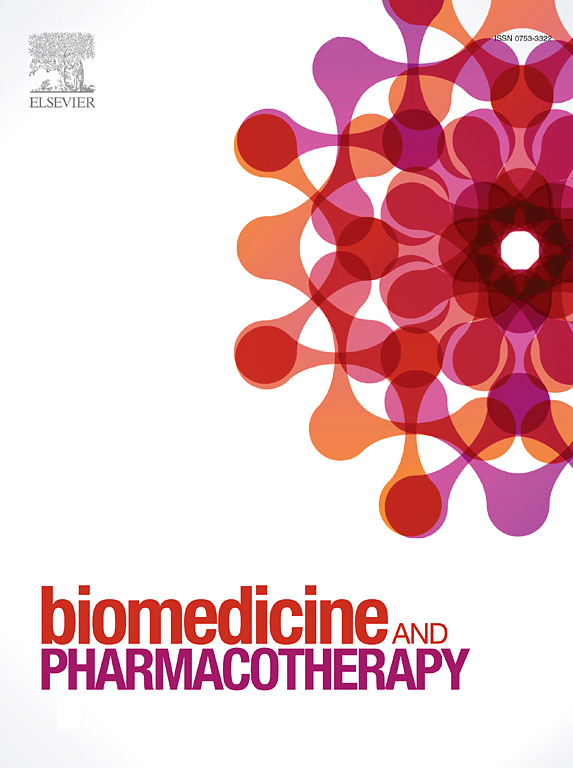Prenatal THC exposure drives sex-specific alterations in spatial memory and hippocampal excitatory/inhibitory balance in adolescent rats
IF 6.9
2区 医学
Q1 MEDICINE, RESEARCH & EXPERIMENTAL
引用次数: 0
Abstract
The interaction between the main psychotropic ingredient of Cannabis, Δ⁹- tetrahydrocannabinol (THC), with the endogenous cannabinoid system (ECS) is a critical and underrated issue that deserves utmost attention. The ECS, indeed, contributes to the formation and regulation of excitatory and inhibitory (E/I) neuronal networks that in the hippocampus underly spatial memory. This study explored sex-specific consequences of prenatal exposure to THC in hippocampus-dependent memory and the underlying cellular and molecular contributors of synaptic plasticity and E/I homeostasis. Sprague Dawley dams were exposed to THC (2 mg/kg) or vehicle, from gestational day 5–20. The adolescent progeny of both sexes was tested for: spatial memory retrieval and flexibility in the Barnes Maze; mRNA expression of relevant players of hippocampal synaptic plasticity; density of cholecystokinin-positive basket cells (CCK+BCs) – a major subtype of hippocampal inhibitory interneurons; mRNA expression of the excitatory and inhibitory synaptic proteins neuroligins (Nlgns), as a proxy of synaptic efficiency. Our results show a sex-specific disruption in spatial memory retrieval and flexibility, a male-specific decrease in CCK+BCs density and increase in the expression of markers of neuroplasticity, and consistent changes in the expression of Nlgn-1 and 3 isoforms. Despite a delay in memory retrieval, flexibility of memory was spared in prenatally-THC-exposed female offspring as well as most of the markers of neuroplasticity; a sex-specific increase in CCK+BCs density, and a consistent expression of Nlgn-3 was observed. The current results highlight a major vulnerability to prenatal exposure to THC on memory processing in the male progeny, and sex-specific alterations in the E/I balance and synaptic plasticity.
产前接触四氢大麻酚会导致青春期大鼠的空间记忆和海马兴奋/抑制平衡发生性别特异性改变。
大麻的主要精神药物Δ⁹- 四氢大麻酚(THC)与内源性大麻素系统(ECS)之间的相互作用是一个关键且被低估的问题,值得高度重视。事实上,ECS 有助于兴奋性和抑制性(E/I)神经元网络的形成和调节,而这些网络在海马中是空间记忆的基础。本研究探讨了产前暴露于四氢大麻酚对海马依赖性记忆的性别特异性影响,以及突触可塑性和E/I平衡的潜在细胞和分子促进因素。从妊娠第 5-20 天开始,Sprague Dawley 母鼠暴露于 THC(2 毫克/千克)或药物。对雌雄胎儿的青春期后代进行了以下测试:巴恩斯迷宫中的空间记忆检索和灵活性;海马突触可塑性相关参与者的 mRNA 表达;胆囊收缩素阳性篮细胞(CCK+BCs)--海马抑制性中间神经元的一个主要亚型--的密度;兴奋性和抑制性突触蛋白神经ligins(Nlgns)的 mRNA 表达,作为突触效率的代表。我们的研究结果表明,空间记忆检索和灵活性的中断具有性别特异性,CCK+BCs 密度的降低和神经可塑性标志物表达的增加具有男性特异性,Nlgn-1 和 3 异构体的表达也发生了一致的变化。尽管产前暴露于四氢大麻酚的雌性后代的记忆检索延迟,但其记忆的灵活性以及大多数神经可塑性标志物都没有受到影响;观察到CCK+BCs密度的增加具有性别特异性,Nlgn-3的表达也具有一致性。目前的研究结果凸显了产前暴露于四氢大麻酚对雄性后代记忆处理的主要脆弱性,以及E/I平衡和突触可塑性的性别特异性改变。
本文章由计算机程序翻译,如有差异,请以英文原文为准。
求助全文
约1分钟内获得全文
求助全文
来源期刊
CiteScore
11.90
自引率
2.70%
发文量
1621
审稿时长
48 days
期刊介绍:
Biomedicine & Pharmacotherapy stands as a multidisciplinary journal, presenting a spectrum of original research reports, reviews, and communications in the realms of clinical and basic medicine, as well as pharmacology. The journal spans various fields, including Cancer, Nutriceutics, Neurodegenerative, Cardiac, and Infectious Diseases.

 求助内容:
求助内容: 应助结果提醒方式:
应助结果提醒方式:


